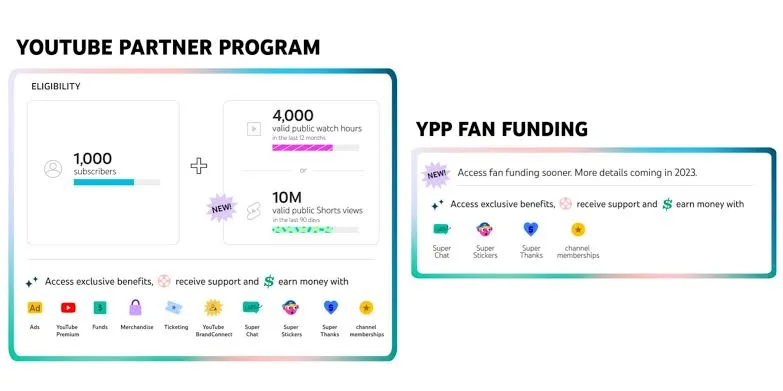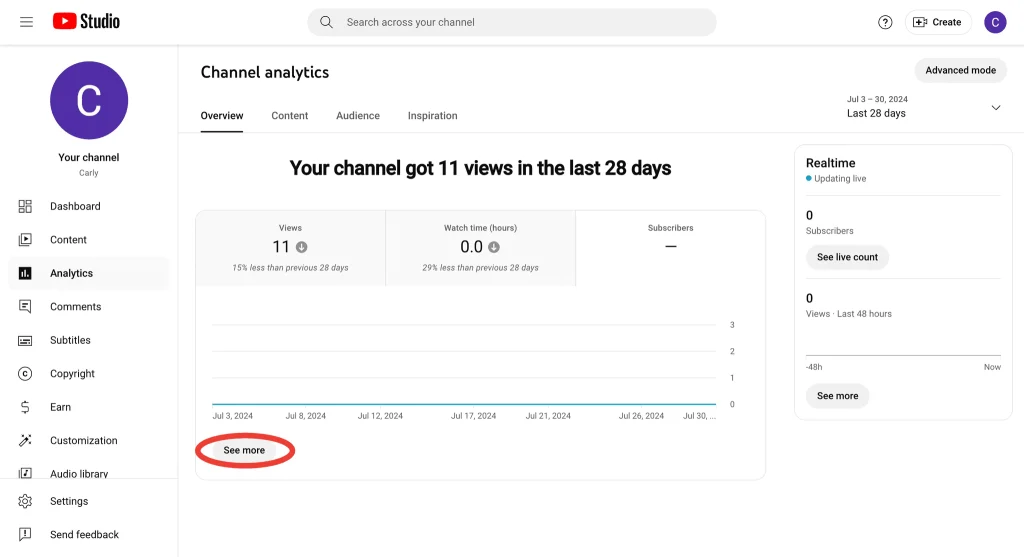In 2025, YouTube remains one of the most powerful platforms for creators to build a brand, share their voice, and earn a living. With over 2 billion monthly active users, the opportunities are vast for those willing to consistently deliver value through entertaining, informative, or engaging content. From casual vloggers to tech reviewers and educators, countless creators have transformed their passion into a full-time income through YouTube.
But making money on YouTube isn’t just about uploading videos and hoping they go viral. It’s a multifaceted process that involves understanding the platform’s monetization tools, engaging an audience, and exploring external revenue streams. Whether you’re a beginner or an experienced creator looking to expand your earnings, this guide covers the most effective strategies to make money on YouTube in 2025. Each subtopic explores a different method with practical insights to help you grow financially and creatively on the platform.
1 . Join the YouTube Partner Program:
To unlock the full potential of YouTube monetization, the first step is to join the YouTube Partner Program (YPP). This program enables creators to earn revenue through ads, memberships, and YouTube Premium views.
When you qualify by hitting 1,000 subscribers and either 4,000 public watch hours or 10 million Shorts views within the last 90 days you can start monetizing content in various formats. You’ll gain access to:

- Ad revenue from display, overlay, and video ads.
- Super features like Super Chat, Super Stickers, and Super Thanks that let fans support you during livestreams and premieres.
- Membership tools, allowing you to create exclusive perks for paying subscribers.
- YouTube Shopping, to sell merchandise directly on your channel.
- Copyright Match Tool, which helps protect your original work.
Creators also benefit from analytics and support that help track earnings and optimize content performance. YouTube has paid over $50 billion to creators in the last three years, proving that joining YPP can significantly impact your earnings. While it may not be the highest-paying strategy alone, it’s an essential foundation for most monetization methods.
2. Turn On Ads for Your Videos:
YouTube ads are one of the simplest monetization options once you’re in the Partner Program. These ads can appear before, during, or after your video and include display ads, skippable video ads, or bumper ads. While it’s largely automated, here’s how to make the most of it:
- Enable monetization in YouTube Studio under the “Earn” tab.
- Create longer videos (8 minutes or more) to enable mid-roll ads.
- Avoid sensitive content to prevent demonetization.
- Analyze earnings using the “Revenue” tab for monthly estimates.
- Balance ad placement so viewers aren’t turned away.
Although ad revenue is passive and consistent, YouTube takes a significant cut 45% for long-form and 55% for Shorts. Additionally, content that isn’t advertiser-friendly may be excluded from monetization. Therefore, it’s advisable to diversify income streams while using ads as a supportive layer.
3. Let Your Audience Support You with Fan Funding:
Imagine building a loyal community that doesn’t just consume your content but actively funds it. Fan funding allows just that, turning casual viewers into dedicated supporters. Platforms like YouTube offer integrated tools:
- Super Chat & Super Stickers: These are paid messages fans send during live streams or premieres, highlighting their comments.
- Super Thanks: Viewers can tip even on regular videos.
- Channel Memberships: Offer tiered monthly subscriptions with perks like custom emojis, exclusive videos, and member-only livestreams.
Beyond YouTube, creators use external platforms such as:
- Patreon: Offers behind-the-scenes content and membership tiers.
- Ko-fi / Buy Me a Coffee: Great for one-time or recurring donations with low fees.
- Tipeee: Similar to Patreon, but with flexible one-off and monthly support options.
Fan funding transforms your content into a community-backed journey, giving you freedom to experiment creatively without relying solely on advertisers.
4. Sell Products and Merch:
Many successful YouTubers turn their brands into merchandise empires. You don’t need to be a fashion icon to sell merch—you just need an engaged audience and a concept they love.
Start by creating simple, branded products:
- T-shirts, hoodies, mugs, stickers
- Digital products like presets, courses, or eBooks
- Niche-specific goods your audience relates to
Use print-on-demand services like Printful or Teespring to handle inventory, printing, and shipping, reducing your upfront investment. YouTube Shopping lets you:
- Connect your Shopify store or other platforms directly to your channel.
- Tag products in livestreams or video descriptions.
- Highlight items through your storefront and end cards.
More than 160,000 creators already use YouTube Shopping tools. If you’re not ready for Shopify, consider Gumroad or Etsy. Selling merch deepens brand loyalty and adds a direct revenue stream controlled entirely by you.
5. Mark with Brands as an Influencer:
Brands are constantly looking for influencers to promote their products, and YouTube is one of the top platforms for influencer marketing. If your channel consistently gets engagement, you can pitch brands and negotiate paid sponsorships.
Think of it this way:
- Views x $0.05 to $0.15 = baseline flat fee
(e.g., 100,000 views = $5,000–$15,000)
Here’s how to succeed:
- Only promote products you believe in.
- Be transparent with your audience.
- Offer creative integration that doesn’t disrupt your video flow.
- Create a media kit summarizing your stats and demographics.
Use platforms like Shopify Collabs or YouTube’s BrandConnect to match with companies that align with your niche. Done right, influencer deals can outperform ad revenue and offer consistent income. Just ensure your content remains authentic to avoid losing viewer trust.
6. License Your Content to the Media:
If you produce something that goes viral a funny pet moment, an emotional interaction, or a jaw-dropping stunt it might be worth money to media companies.
Rather than letting news outlets use your video for free:
- License it through platforms like Jukin Media or Storyful
- Add terms in your video description prohibiting reuse without permission
- Negotiate usage rights directly when contacted by publishers
Even small creators can earn if their clips appear on TV or major digital platforms. Viral videos often have a second life in news recaps, countdown shows, or compilation content.
Licensing is not a consistent income stream, but when it hits, it can pay big. Consider every upload a potential asset, especially those with broad public appeal.
7. Crowdfund Your Creative Projects:
Great ideas often get stuck due to lack of funding. That’s where crowdfunding can step in allowing your community to finance your vision.
The most popular platforms include:
- Kickstarter: Great for one-time, goal-based projects
- Indiegogo: Offers flexible funding even if you don’t meet your goal
Tips for success:
- Create a compelling trailer or preview video
- Explain how the money will be used
- Offer meaningful rewards like early access, credits, or exclusive content
Example: A creator crowdfunding a short film might offer digital posters, behind-the-scenes footage, or a producer credit. Crowdfunding not only brings in money but also forges a stronger bond between you and your audience by involving them directly in your creative process.
8. Use Affiliate Marketing:
Affiliate marketing allows you to earn a commission for every sale made through your referral link. This strategy is ideal for product reviewers, tech enthusiasts, lifestyle vloggers, and educators.

How to start:
- Sign up for affiliate programs such as Amazon Associates, ShareASale, or individual brand programs.
- Insert affiliate links in your video descriptions or comment pins.
- Disclose the affiliation transparently to maintain viewer trust.
Affiliate marketing scales well. If a video continues to get views over time, it can generate passive income for years. For example, a gear review video with 100K views and a $100 product with 5% commission can net hundreds of dollars in ongoing income.
It’s one of the most effective methods for creators who prefer long-term, evergreen content.
Conclusion:
Making money on YouTube in 2025 is more diverse and accessible than ever. From the foundational YouTube Partner Program to external streams like merch, crowdfunding, and affiliate marketing, creators have numerous avenues to explore. What matters most is your ability to connect with an audience and offer consistent value—whether that’s through humor, insight, or unique storytelling.
Rather than relying on a single source of income, the most successful YouTubers diversify their revenue. They build a personal brand that lives beyond the platform, turning casual viewers into loyal fans and buyers. Whether you’re just starting out or already monetizing, there’s always room to optimize and grow.
FAQs:
Earnings vary, but ad revenue alone might bring in $2–$5 per 1,000 views. With diversified strategies like affiliate marketing or memberships, it can grow significantly.
No. Many micro-creators with niche audiences earn well through brand deals, merch, or affiliate programs without having millions of subscribers.
Absolutely. With expanded monetization tools like Shorts ads, Shopping, and fan funding, there are more income options than ever.
Yes, Shorts can earn ad revenue through the Partner Program, and you can also integrate affiliate links, brand shoutouts, and YouTube Shopping.
It depends on your consistency and niche. Some creators hit monetization requirements in months, while others take a year or more. Focus on quality and audience engagement for long-term success.
